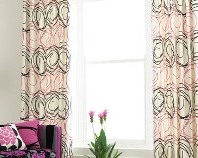Shabby Chic - Timeless Style for Your Home
 November 10, 2011
November 10, 2011 
Janet Ramin - Like a grand dame in her waning years, a shabby chic home reflects faded beauty and elegance but with blurry features. Despite this decay, Shabby Chic became a very popular style that gathered steam in the 1980s and continues to be a fashionable choice today. In our continuing series on mood boards, we’ll delve into the elements of a shabby chic interior.
Despite its emergence as a somewhat contemporary style, shabby chic has actually been around for a long time – the style really derives from the faded elegance of old British country manors. The British upper class commissioned furniture makers to create long-lasting quality furniture and basically handed it down to their heirs. Sometimes their descendents replaced the furniture with newer styles but as fortunes waned, some kept the more popular pieces – the Georgian and neoclassical styles – until it broke down. What started as mere frugality eventually became a style statement in the 1980s.
A shabby chic interior usually features furniture that has naturally faded by time and use, its paint peeling, its edges worn down but with its integral structure still mostly intact and functioning. Or a shabby chic interior can feature furniture that has been artificially “aged” using distressing techniques. The overall mood that a shabby chic style tries to achieve is elegance and a romantic atmosphere. Shabby Chic doesn't try to achieve a “funky," thrift shop look that may happen when using vintage pieces; it aims for more of a timeless, classic style.
On our mood board above, this Shabby Chic bedroom includes the Montana chaise by Peninsula Home. The chaise frame has been painted and then partially hand-rubbed off to create an “aged” patina. The Lisbon table with its X-shaped legs, also by Peninsula Home, is used here as a bedside table. The Lisbon was distressed and then its edges studded with brass nail heads.
The writing desk with cabriole legs from Guildmaster is
 furniture,
furniture,  lighting,
lighting,  mood board,
mood board,  shabby chic in
shabby chic in  Sheffield School,
Sheffield School,  interior design,
interior design,  video
video 












